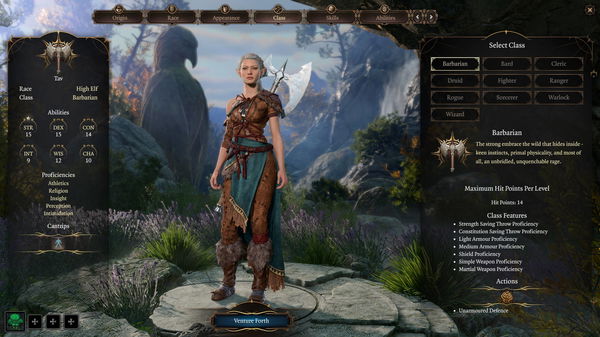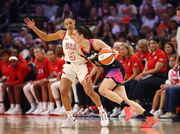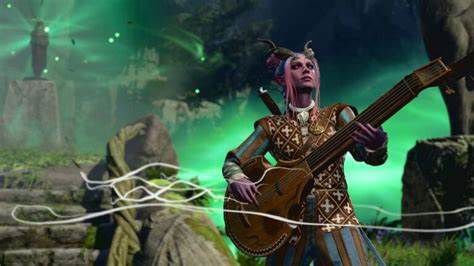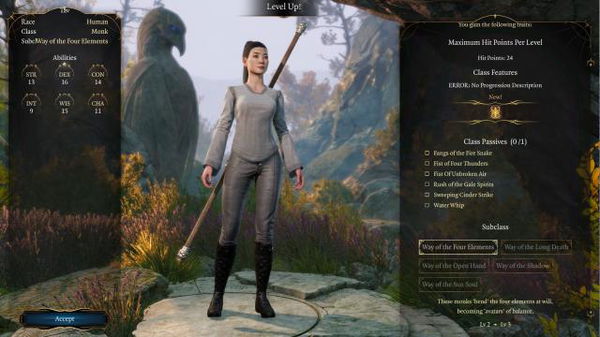

Baldur’s Gate III is one of the most popular games since its full version launched three days ago. This role-playing game already received much praise for its amazing gameplay and mind-blowing graphics. However, what appealed to the fans more, is the various classes offered t players in the gameplay.
Watch What’s Trending Now!
These character classes offer separate and unique in-game abilities for players to enhance their gaming experience. So, here we present you with some insights into the abilities and powers of these classes. Along with that, details about the subclass categories are also given to improve the gaming experience of the debutants.
ADVERTISEMENT
Details from the character classes offered in Baldur’s Gate 3
Barbarian
In the Barbarian class, beginners can focus on the constitution and strength statistics of the character. Players can also develop the class of their armor by unarmored defenses. However, beginners should concentrate more on playing as armored Barbarians. Frequent use of rages can be of great help. Beginners can choose the Berserker subclass category of Barbarian for straight gameplay and a more versatile experience. In Barbarian class, debut players are advised to use two-handed weapons. They can take the Great Weapon Master feat and an extra attack gain on level 5.
ADVERTISEMENT

ADVERTISEMENT
Bard
Players in Bard class should memorise the utility spells, healing words and guidance well. While attacking an enemy, vicious mockery can impose a disadvantage on the players. Role and party composition are essential when choosing a subclass category under Bard. Beginners should avoid multi-classing before level 6 for receiving all class-featured benefits. The College of Lore subclass offers more spells, whereas, in College of Valor, players can gain more martial skills.
Top Stories
Cam Newton Makes NFL Return Conditions Clear to 32 Teams as Panthers Legend Confirms Retirement Stance

Caitlin Clark Shows Concerning Signs vs. Kelsey Plum During USA Camp Debut, per National Reporter

Tom Brady Makes Career Announcement for Vegas as Pete Carroll Addresses Losing Raiders Locker Room

“RIP”: Prayers Pour In as Tom Brady’s Raiders Struck by Tragedy

J. J. McCarthy Awaits Punishment From Vikings After Rejecting Kevin O’Connell’s Instructions

Kyle Tucker Slowly Slips From Toronto’s Grip After Blue Jays Legend Confirms Bo Bichette Plan

ADVERTISEMENT

ADVERTISEMENT
Druid
Players in Druid class should focus on Healing words, speaking with animals and Goodberry spells. Wisdom and Dexterity should be prioritized as the Druid class offers unarmored defense. Circle of Moon subclass offers transfiguration-inspired combats by taking shapes of animals and the Circle of the Land offers more versatility in spells. In the Druid class, players will see Moon Beam and Enhance Ability as essential spells.

ADVERTISEMENT
Fighter
In Fighter class, players should strategically use the Action Surge, which offers a second combat stunt for players. Debut players should take the Dueling Style of fighting to make more damage with shield protection. More versatile combat options can be seen in the Battle Master subclass category under Fighter. At level 5, players under the Fighter class can gain more attacks, so multi-classing is not advisable before that.
ADVERTISEMENT
Cleric
Debut players should choose Life or Light to respectively heal or cast an offensive spell. Enhance Ability, Healing word, and Guidance are the stronger spell choices in the Cleric class. Players in the Cleric class are also advised to choose their subclass category according to gaming preference and style. Circle of the Moon subclass offers transfiguration abilities to take the shape of a wild animal. Another subclass category Circle of the Land offers more versatility in spells.
Read more: Here’s How You Can Get Powerful Early in Baldur’s Gate 3!
ADVERTISEMENT
The cleric class offers similar abilities to the Druid class. Players should avoid multi-classing before level 6 to access more powerful spells in the game.
Monk
Similar to Druid Class, players in Monk Class need to focus on wisdom and dexterity more as the class offers unarmored defense for players. Monk’s subclass category Way of the Open Hand offers more game damage and control. Beginners are advised to play like a melee monk for better in-game efficiency. In Monk Class, players can experience Way of Shadow becoming stronger with Shadow Step at level 6.

Warlock
Warlock is one of the recommended classes in the game because of its spells and surviving aspects. The fiend subclass category under the Warlock class offers more offensive spells with surviving features. In the Fiend subclass, players can use fire spells and also give a temporary hit to their enemies while defeating them. The Hex spell is especially essential for increasing the amount of damage. Cloud of Dagger and Grease spells are also advised to consider in the game.

Paladin
In Paladin class, players should choose a one-handed weapon with a shield and a Dueling fighting style for combat. Players can use Divine Smite if they want to cause significant damage. Multi-classing with Bard or Sorcerer can help players in the Paladin class get access to more spells. However, the subclass categories are advised to choose according to role-playing preferences. If players want to gain more attacks, they shouldn’t use multiclass before level 5.
Wizard
Debut players should focus primarily on Magic Missile, which is a damage-control spell. The Evocation subclass category in the Wizard class is essential, as it can help players protect the allies in a specific area. Dice rolls can be manipulated in The Divination subclass category, which also influences attack rolls and throws savings. Now the armor preference is completely on the players. However, armored attacks can help players in increasing the characters’ survival chances.
So, which one of these classes would you like to explore in Baldur’s Gate 3? Let us know by commenting below.
Watch this story: Developers Reveal Major Assassin’s Creed Mirage Details
ADVERTISEMENT
ADVERTISEMENT
ADVERTISEMENT

